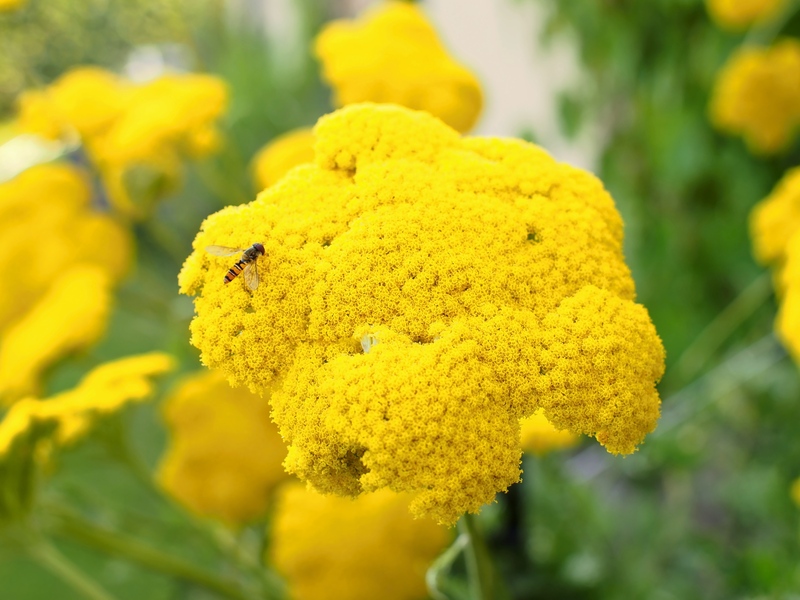Construct an Exciting and Safe Garden for Kids
Posted on 10/09/2025
Construct an Exciting and Safe Garden for Kids: Ultimate Guide for Parents
Designing a garden for children is one of the most rewarding projects a family can undertake. With proper planning, a kids' garden becomes a hub for imaginative play, hands-on education, and healthy outdoor activity. But beyond fun, a parent's top concern revolves around creating a safe garden environment for children. This comprehensive guide offers practical advice and creative inspirations to help you create an exciting and safe garden for kids, fostering curious exploration and lasting memories.

Why Build a Kids-Friendly Garden?
Children's gardens introduce kids to the wonders of nature, encouraging them to learn, play, and develop critical skills through direct contact with the world around them. Here's why every family should consider constructing a fun and secure backyard garden for children:
- Promotes Creativity: Kids' gardens provide an ideal environment for imaginative play and nature-inspired art.
- Improves Physical Health: Gardening encourages active movement, fresh air, and exposure to natural sunlight.
- Teaches Responsibility: Assigning kids their own garden patch fosters care and stewardship of living things.
- Develops Educational Skills: Gardening integrates math, science, and environmental studies hands-on.
- Boosts Emotional Well-being: A lively, safe backyard reduces screen time and supports a positive mood in children.
Planning Your Safe and Exciting Kids' Garden
1. Assess Your Outdoor Space
Begin your project by thoroughly assessing the available space in your yard or patio. Take note of sun exposure, existing shade, soil quality, and proximity to your home for easy supervision. If you lack a backyard, consider container gardens, raised beds, or vertical gardening options suitable for balconies or small patios.
2. Prioritize Safety
Safety is the cornerstone when designing a child-friendly garden. To build a secure garden for kids, pay attention to:
- Fencing and Boundaries: Install secure garden fencing to restrict unsupervised access and define the garden space.
- Non-toxic Plant Choices: Avoid plants that are poisonous or have thorns, spines, or toxic berries/leaves.
- Safe Materials: Use non-slip pathways and child-safe garden edging without sharp corners.
- Tool Storage: Keep all chemicals and sharp tools locked away in a dedicated shed or high cabinet.
- Water Safety: Cover ponds, water features, or consider recirculating fountains instead of deep water bodies.
3. Incorporate Multi-Sensory Elements
An exciting children's garden stimulates the senses. Integrate:
- Scented Plants: Lavender, mint, basil
- Tactile Features: Lamb's ear, soft grasses, sandpits
- Sound Elements: Wind chimes, rustling ornamental grasses, bamboo
- Visual Appeal: Colorful flowers, painted stones, fairy lights
- Edible Plants: Strawberries, cherry tomatoes, snap peas
Designing for Fun and Education
1. Create Zones for Play and Learning
When you construct a kids' garden, diversify the space using designated zones:
- Imaginative Play Corner: Install a teepee, child-sized benches, or a playhouse.
- Vegetable Patch: Set aside a raised bed or small plots for easy access and teaching.
- Nature Observation Area: Place bug hotels, butterfly feeders, and birdhouses for wildlife encounters.
- Sand and Water Play Zone: Use covered sandpits or shallow water tables for sensory play (always supervise).
- Quiet Retreat Space: Add a hammock, reading nook, or cozy corner for rest and reflection.
2. Choose Child-Safe Garden Plants
The best garden plants for kids are safe, sturdy, and engaging. Here is a selection of child-friendly plants and flowers:
- Sunflowers: Tall, easy to grow, and loved by children.
- Nasturtiums: Edible flowers and leaves, vibrant colors.
- Marigolds: Hardy, colorful blooms that repel pests.
- Radishes: Quick to sprout and fun to pull from the ground.
- Pumpkins: Watch them grow from seed to jack-o'-lantern!
- Herbs (Basil, Mint, Thyme): Fragrant and great for taste experiments.
- Snapdragons: Soft blooms, enjoyable to touch and squeeze.
3. Involve Kids in Garden Creation
Engage children in planning and planting every step of the way. This not only sparks excitement but teaches practical skills. Let them help choose plants, place stepping stones, or paint plant markers. The more ownership they feel, the more pride and joy children experience in their garden.
Essential Safety Tips for Child-Friendly Gardening
Even the most exciting children's gardening projects require parental oversight. Safeguard your young gardeners by following these key precautions:
- Educate on Plant Safety: Teach kids not to eat or touch unfamiliar plants, berries, or mushrooms.
- Shade and Hydration: Supply sunhats, sunscreen, and water bottles for prolonged play.
- Use Age-Appropriate Tools: Purchase lightweight, ergonomic, and child-safe gardening tools.
- Maintain Cleanliness: Practice proper hand washing and cleaning after garden time.
- Constant Supervision: Keep a watchful eye on children, especially near water or sheds.
Accessible and Inclusive Garden Design
To construct a truly welcoming garden for all children—regardless of ability level—consider these inclusive design elements:
- Wide, Even Paths: Facilitate wheelchair or stroller access using firm, non-slip surface materials.
- Raised Beds: Ensure gardening is within easy reach for every child.
- Adaptive Tools: Look for easy-grip handles and ergonomic designs.
- Clear Sight Lines: Remove obstacles and trim shrubs for easy supervision.
DIY Ideas for Fun and Safe Children's Gardens
1. Sensory Pathways
Lay a winding path made from different textured materials—like pebbles, wood slices, and smooth tiles—for bare feet exploration. This enriches tactile experiences and encourages balance.
2. Living Teepee or Sunflower House
Construct a magical hideaway by growing tall, dense plants like beans, sunflowers, and morning glories around a simple teepee framework. Children can experience the thrill of a secret green fort while staying shaded and safe.
3. Garden Art and Craft Stations
Set up a DIY craft area where kids can paint stones, make garden labels, or craft wind chimes from recycled materials. This zone promotes creativity and lets children leave their artistic mark on the garden.
4. Wildlife Watchtower
Encourage kids to construct bug hotels, bird feeders, or butterfly puddling trays. Observing wildlife up close fosters scientific curiosity and appreciation for nature's diversity.
5. Edible Snack Trail
Plant a border of fruits and vegetables along a meandering path. As children move through the garden, they can pick fresh snacks directly from the plants, reinforcing healthy eating and food knowledge.
Best Practices for Maintenance and Safety
Keep your garden for kids inviting and hazard-free with these ongoing strategies:
- Regular Inspections: Check for overgrown branches, loose pavers, or reemerging toxic weeds.
- Routinely Clean Play Equipment: Prevent mold, splinters, or sharp objects from posing risks on swings, slides, or benches.
- Refresh Mulch and Surfaces: Use soft bark mulch underfoot where falls are likely.
- Monitor Pest Control Measures: Opt for organic or manual pest management (like hand-picking insects or neem oil) to avoid chemical exposure.
- Involve Kids in Upkeep: Assign simple tasks like watering, sweeping pathways, or harvesting to keep children engaged and responsible.
Garden Activities to Engage and Educate
Constructing an exciting and safe garden for kids is more than design--it's about purposeful activities that keep children interested in gardening all season long.
- Plant Journals: Encourage children to record plant progress and wildlife sightings.
- Weather Tracking: Use rain gauges or thermometers to learn about climate and seasons.
- Themed Garden Hunts: Create scavenger hunts for leaves, insects, or flower colors.
- Garden-to-Table Cooking: Harvest ingredients for simple snacks and meals.
- Mini Science Experiments: Test soil pH, sprout seeds in jars, or observe composting in action.

Resources: Further Reading and Inspiration
Looking for more ways to build an exciting, educational and safe garden for your kids? Explore these recommended resources and books:
- Roots, Shoots, Buckets & Boots: Gardening Together with Children by Sharon Lovejoy
- Gardening Lab for Kids by Renata Fossen Brown
- Local garden clubs and botanical gardens often host family workshops and outdoor classes
- Online platforms like Pinterest and YouTube for visual tutorials and DIY children's garden ideas
Conclusion: Reaping the Rewards of a Safe and Exciting Children's Garden
Creating a vibrant and secure garden for kids is an investment in joy, health, and lifelong learning. By embracing both safety and adventure, your outdoor space evolves into a nurturing playground that ignites creativity and teaches stewardship of the planet. With careful planning and playful imagination, you'll provide a backyard sanctuary where your children thrive today, and remember fondly for years to come.
Ready to construct an exciting and safe garden for your kids? Start small, listen to your children's wishes, and grow your space in sync with their curiosity. The outdoors awaits--dig in!

